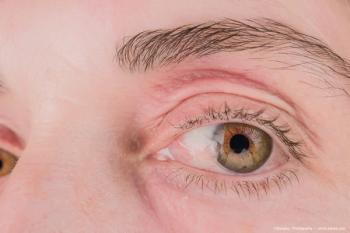
Rare ocular surface tumors often prove deadly
Nathan Hall, BS, MS, presents research on how epidemiologic analysis of malignant ocular surface tumors found significant differences in geographic prevalence rates in the United States.
Reviewed by Nathan Eli Hall, BS, MS
An epidemiologic analysis of malignant ocular surface tumors, which are rare but serious events, found significant differences in geographic prevalence rates in the US with more Caucasian men and smokers affected, according to Nathan Hall, MS, BS, from the Schepens Eye Research Institute, Massachusetts Eye and Ear, Department of Ophthalmology, Harvard Medical School, Boston.
Considering the seriousness of these tumors of the conjunctiva and/or cornea, patient morbidity and mortality can be affected, Hall pointed out, noting the importance of identifying the associated risk factors, such as ultraviolet light exposure in various regions, gender, and older age that can play a role.
Hall and his colleagues conducted the analysis, which used data from the American Academy of Ophthalmology’s IRIS Registry, and included more than 15,000 patients who had been diagnosed with a malignant ocular surface tumor of the conjunctiva/cornea between 2013 and 2019.
The investigators found that prevalence rates of ocular surface tumors differed across all geographic areas, with the highest prevalence in the North Central region (0.0032 cases/100,000) and lowest in the West (0.0014 cases/100,000), Hall reported.
White males and smokers were most highly affected and non-white females were the least affected (p < 0.0001 for all comparisons). Hall also noted that smoking seems to have an impact on the prevalence because the investigators found a significantly higher proportion of current smokers within those patients with an ocular surface tumor than in the general IRIS Registry patient pool.
Investigators also pointed out that exposure to ultraviolet light and latitude-related differences have been reported previously as risk factors for ocular surface tumors in other studies, and including similar types of data in the IRIS Registry should be another path of investigation.
“Our results suggested a significantly higher prevalence of ocular surface tumors in white males and smokers, and differences between geographic area of the US,” Hall concluded.
Newsletter
Don’t miss out—get Ophthalmology Times updates on the latest clinical advancements and expert interviews, straight to your inbox.





